by Mary Salinas | Oct 20, 2018
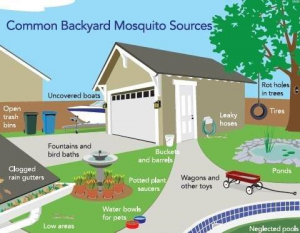
A natural disaster such as Hurricane Michael can cause excess standing water which leads nuisance mosquito populations to greatly increase. Floodwater mosquitoes lay their eggs in the moist soil. Amazingly, the eggs survive even when the soil dries out. When the eggs in soil once again have consistent moisture, they hatch! One female mosquito may lay up to 200 eggs per batch . Standing water should be reduced as mush as possible to prevent mosquitoes from developing.
You should protect yourself by using an insect repellant (following all label instructions) with any of these active ingredients or using one of the other strategies:
- DEET
- Picaridin
- Oil of lemon eucalyptus
- Para-menthane diol
- IR3535
- An alternative is to wear long-sleeved shirts and pants – although that’s tough in our hot weather
- Wear clothing that is pre-treated with permethrin or apply a permethrin product to your clothes, but not your skin!
- Avoid getting bitten while you sleep by choosing a place with air conditioning or screens on windows and doors or sleep under a mosquito bed net.
Now let’s talk about mosquito control in your own landscape.
Let’s first explore what kind of environment in your landscape and around your home is friendly to the proliferation of mosquitoes. Adult mosquitoes lay their eggs on or very near water that is still or stagnant. That is because the larvae live in the water but have to come to the surface regularly to breeze. The small delicate larvae need the water surface to be still in order to surface and breathe. Water that is continually moving or flowing inhibits mosquito populations.
Look around your home and landscape for these possible sites of still water that can be excellent mosquito breeding grounds:
- bird baths
- potted plant saucers
- pet dishes
- old tires
- ponds
- roof gutters
- tarps over boats or recreational vehicles
- rain barrels (screen mesh over the opening will prevent females from laying their eggs)
- bromeliads (they hold water in their central cup or leaf axils)
- any other structure that will hold even a small amount of water (I even had them on a heating mat in a greenhouse that had very shallow puddles of water!)
You may want to rid yourself of some of these sources of standing water or empty them every three to four days. What if you have bromeliads, a pond or some other standing water and you want to keep them and yet control mosquitoes? There is an environmentally responsible solution. Some bacteria, Bacillus thuringiensis ssp. israelensis or Bacillus sphaericus, only infects mosquitoes and other close relatives like gnats and blackflies and is harmless to all other organisms. Look for products on the market that contain this bacteria.
For more information:
Mosquito Repellents
UF/IFAS Mosquito Information Website
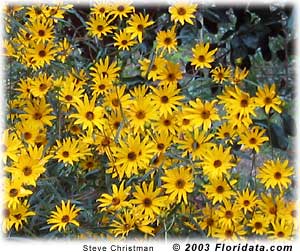
by Sheila Dunning | Oct 2, 2018
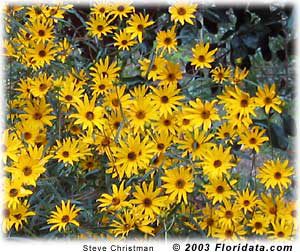 Each fall, nature puts on a brilliant show of color throughout the United States. As the temperatures drop, autumn encourages the “leaf peepers” to hit the road in search of the red-, yellow- and orange-colored leaves of the northern deciduous trees. In Northwest Florida the color of autumn isn’t just from trees. The reds, purples, yellow and white blooms and berries that appear on
Each fall, nature puts on a brilliant show of color throughout the United States. As the temperatures drop, autumn encourages the “leaf peepers” to hit the road in search of the red-, yellow- and orange-colored leaves of the northern deciduous trees. In Northwest Florida the color of autumn isn’t just from trees. The reds, purples, yellow and white blooms and berries that appear on
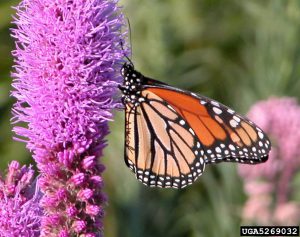
Monarch butterfly on dense blazing star (Liatris spicata var. spicata).
Beverly Turner, Jackson Minnesota, Bugwood.org
many native plants add spectacular color to the landscape. American Beautyberry, Callicarpa americana, is loaded with royal-colored fruit that will persist all winter long. Whispy pinkish-cream colored seedheads look like mist atop Purple Lovegrass, Eragrostis spectabilis and Muhlygrass, Muhlenbergia capillaris. The Monarchs and other butterfly species flock to the creamy white “fluff” that covers Saltbrush, Baccharis halimifolia. But, yellow is by far the dominant fall flower color. With all the Goldenrod, Solidago spp., Narrowleaf Sunflower, Helianthus angustifolius and Tickseed, Coreopsis spp., the roadsides are golden. When driving the roads it’s nearly impossible to not see the bright yellows in the ditches and along the wood’s edge. Golden Asters (Chrysopsis spp.), Tickseeds (Coreopsis spp.), Silkgrasses (Pityopsis spp.), Sunflowers (Helianthus spp.) and Goldenrods (Solidago spp.) are displaying their petals of gold at every turn. These wildflowers are all members of the Aster family, one of the largest plant families in the world. For most, envisioning an Aster means a flower that looks like a daisy. While many are daisy-like in structure, others lack the petals and appear more like cascading sprays. So if you are one of the many “hitting the road in search of fall color”, head to open areas. For wildflowers, that means rural locations with limited homes and businesses. Forested areas and non-grazed pastures typically have showy displays, especially when a spring burn was performed earlier in the year. Peeking out from the woods edge are the small red trumpet-shaped blooms of Red Basil, Calamintha coccinea and tall purple spikes of Gayfeather, Liatris spp.
Visit the Florida Wildflower Foundation website, www.flawildflowers.org/bloom.php, to see both what’s in bloom and the locations of the state’s prime viewing areas. These are all native wildflowers that can be obtained through seed companies. Many are also available as potted plants at the local nurseries. Read the name carefully though. There are cultivated varieties that may appear or perform differently than those that naturally occur in Northwest Florida. For more information on Common Native Wildflowers of North Florida go to http://edis.ifas.ufl.edu/ep061
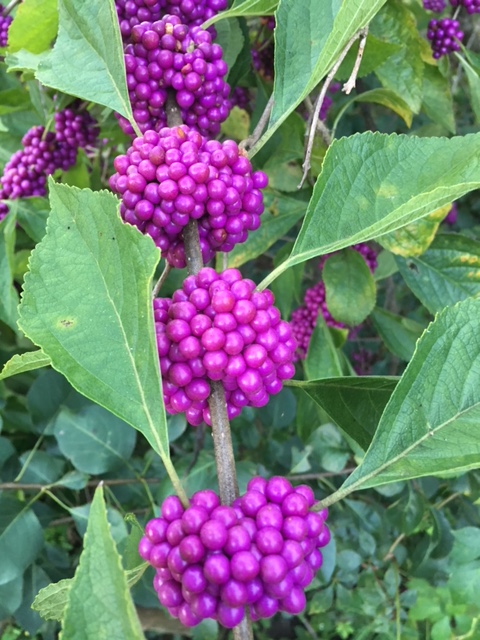
by Larry Williams | Oct 2, 2018
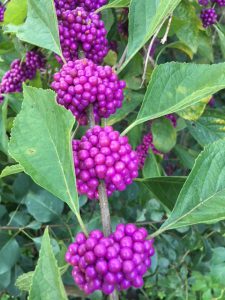
American Beautyberry Fruit.
Photo credit: Larry Williams
American beautyberry (Callicarpa americana) puts on quite a show during late summer and fall with its bright purple fruit. I have some of these plants in my landscape and they are beginning to show color now with their profusion of berry-like fruit found along the thin branches, resulting in the plant taking on a weeping habit.
Each fruit is only about 1/3 inch in diameter but collectively form roundish clusters that encircle the stems. The berries are particularly showy in September and October. They remain on the plant, even after its leaves have dropped, into early winter if not eaten by birds and other wildlife.
Many species of birds will eat beautyberry fruit including robins, cardinals, mockingbirds, brown thrashers, finches and towhees. Birds are a major method of seed dispersal for this plant.
One of my neighbors noticed my plants a number of years ago and commented, “I had never thought about using this plant in a landscape.” He grew up in Northwest Florida and had always been used to seeing American beautyberry plants growing in the wild as they are native. The plant is not well suited for manicured, formal landscapes but can be useful in a naturalized garden.
Even though I consider the showy fruit its best attribute, the small, lavender flowers tightly bunched together along the stems during June to August are attractive, as well.
American beautyberry is a deciduous shrub without much ornamental value during the winter. But during the growing season, its somewhat course, fuzzy, light-green leaves look good in a setting with other darker-leaved shrubs.
It grows well in part shade/part sun as an understory plant beneath larger trees such as pines and oaks.
Be sure to allow enough room for this sprawling shrub to develop into its mature size of three to eight feet in height with an equal spread.
It may also be used as an informal screen or even as a specimen plant. But avoid using it where it will require regular shearing as the flowers and fruit are produced on new growth.
Thinning out old or low-growing branches is a better method of pruning this plant. American beautyberry may self-seed but I have not seen this to be a bothersome problem.
America beautyberry is somewhat available in the nursery trade and is fairly easy to propagate from stem cuttings. It can be propagated from seeds, as well. In addition to the purple fruiting types, look for cultivars such as ‘Russell Montgomery’ that produce white fruit. There are also other nonnative species of Callicarpa worth looking at, such as C. dichotoma and C. japonica.






